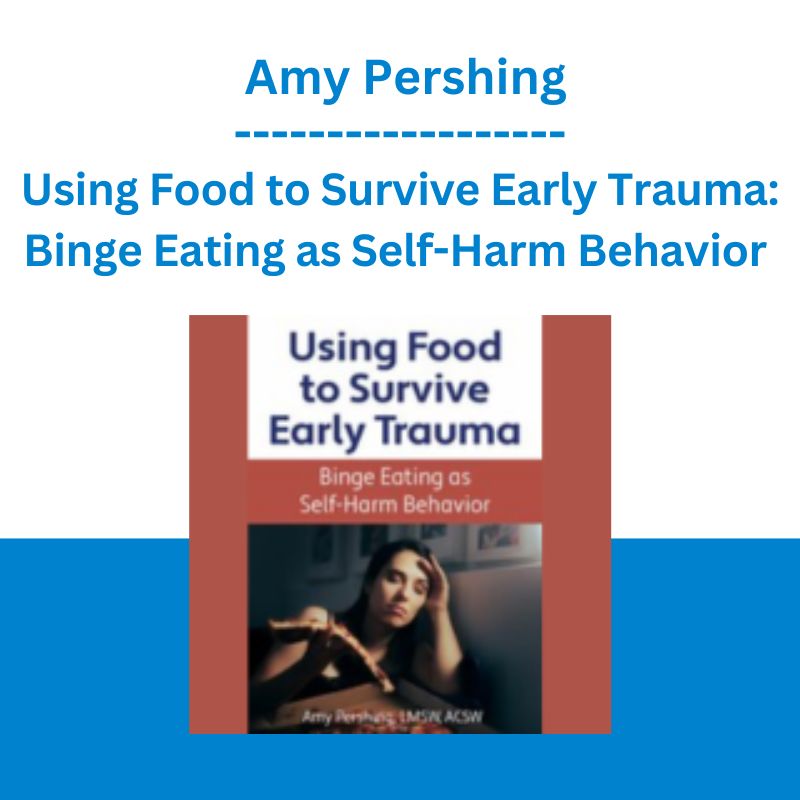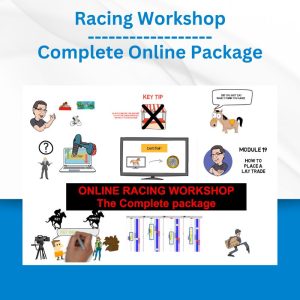*** Proof of Product ***
Exploring the Essential Features of “Using Food to Survive Early Trauma: Binge Eating as Self-Harm Behavior – Amy Pershing”
Binge eating often develops to protect clients from the overwhelming somatic and psychological experience of trauma. When few choices for coping are available, particularly in childhood, food may allow for stimulation, dissociation, and other means of survival. Amy Pershing, LMSW, ACSW, a pioneer in the treatment of binge eating disorder, will show you:
- How to transform your clients’ relationships with food
- Strengths-based interventions to build affect tolerance and develop self-compassion
- Critical skills to address the impact of cultural body shaming and weight stigma on recovery
Speaker
Amy Pershing, LMSW, ACSW, CCTP-II
Center for Eating Disorders
Amy Pershing, LMSW, ACSW, CCTP-II, is the founding director of Bodywise, the first BED-specific treatment program in the United States, and president of the Board of the Center for Eating Disorders in Ann Arbor, Michigan. She is the founder of Pershing Consulting, which offers training to clinicians treating BED and trauma worldwide. Amy is also the co-founder of “Attune”, an online coaching program for attuned eating and recovery support.
Amy is an internationally known leader in the development of treatment paradigms for BED, and one of the first clinicians to specialize in BED treatment. Based on 35 years of clinical experience, Amy has pioneered an approach to BED recovery that is strengths-based, and trauma informed, incorporating Internal Family Systems (IFS) and body-based techniques to heal the deeper issues that drive binge behaviors. Her approach integrates a non-diet body autonomy philosophy, helping clients create lasting change with food and body image. She is the author of the book Binge Eating Disorder: The Journey to Recovery and Beyond and Emotional Eating, Chronic Dieting, Bingeing and Body Image: A Trauma-Informed Workbook, with co-authors Judith Matz and Christy Harrison. She also offers a variety of trainings on BED treatment through PESI. Amy maintains her clinical practice in Ann Arbor, Michigan.
Speaker Disclosures:
Financial: Amy Pershing is the founding director of Bodywise and the Vice President of The Center for Eating Disorders. She receives royalties as a published author. Amy Pershing receives a speaking honorarium, recording, and book royalties from Psychotherapy Networker and PESI, Inc. She has no relevant financial relationships with ineligible organizations.
Non-financial: Amy Pershing is a member of the National Register of Eating Disorders Professionals and the Academy of Certified Social Workers. She is a founding board member of the Eating Disorders Action Network and The Body Freedom Project. She is the membership chair for the Eating Disorders Professional League of Michigan.
Objectives
- Conduct an assessment for binge eating disorder.
- Examine binge eating and restriction through the lens of self-harm.
- Utilize at least two interventions to prepare clients to manage the impulse to binge.
Outline
Define binge eating/BED
- Understand how bingeing (and restriction) offer protections in the face of overwhelming experiences
- The Critical Components of the Change Process
- Treatment Essentials and Best/Worst Models of Practice
- Defining Recovery and case example
Definitions
- What is a binge? How does it differ from “overeating”?
- What is BED?
- Stats about BED
- Etiology
- Trauma (especially trauma to body, and weight related bullying and body shaming); attachment trauma
- Dieting
- ADHD Spectrum; “HSP”
- How to assess for BED in clinical practice
Bingeing and Restriction as Self-Harm Behaviors
- Used much like cutting and other NSSI behaviors: management of the FFFF response and overwhelming experience
- Food is more predictable, available, and already intrinsically comforting, especially for children
- Endogenous opiates released
- Binges lessen PFC availability, so dissociation achieved
- Less dissonance than cutting/burning
- May use body shape/size to communicate, as with cuts
- May begin organically with food restriction by dieting (even at early ages)
Common Uses of Binge Eating and Restriction as NSSI
The Basics of Change
- Any treatment model must be strengths-based in approach
- Abstinence models should be avoided
- Models that suggest bingeing is about being “powerless” should be avoided
- The “choice” to binge must belong to the client; no behavior contracts
- Bingeing must be seen as a part of the journey, not a “relapse”
- Weight stigma, body objectification must be addressed
- Non-diet/intuitive eating model builds trust in the body and allows clients to be the expert and owner of their body and experience
- “Fixing” the body (i.e. weight loss or shape change) should not be a treatment goal
- Using the POWR Model for the Impulse to Binge
- Pause into presence
- Open and allow
- Wisely consider
- Respond with care
Case example using POWR
Target Audience
- Counselors
- Social Workers
- Psychologists
- Psychiatrists
- Marriage & Family Therapists
- Addiction Counselors
- Other mental health professionals
Please see the full list of alternative group-buy courses available here: https://lunacourse.com/shop/










 Fred Haug - Virtual Wholesaling Simplified
Fred Haug - Virtual Wholesaling Simplified  Toshko Raychev - Profit System + ITF Assistant
Toshko Raychev - Profit System + ITF Assistant  Team NFT Money - Ultimate NFT Playbook
Team NFT Money - Ultimate NFT Playbook  Erik Banks - Alternative Risk Transfer
Erik Banks - Alternative Risk Transfer  Racing Workshop - Complete Online Package
Racing Workshop - Complete Online Package  Forexmentor - Recurring Forex Patterns
Forexmentor - Recurring Forex Patterns  Matan Feldman - The 13-Week Cash Flow Modeling - Wall Street Prep
Matan Feldman - The 13-Week Cash Flow Modeling - Wall Street Prep  Chris Capre - Advanced Price Action Ongoing Training & Webinars
Chris Capre - Advanced Price Action Ongoing Training & Webinars  Money Miracle - George Angell - Use Other Peoples Money To Make You Rich
Money Miracle - George Angell - Use Other Peoples Money To Make You Rich  Julie Stoian & Cathy Olson - Launch Gorgeous - Funnel Gorgeous Bundle
Julie Stoian & Cathy Olson - Launch Gorgeous - Funnel Gorgeous Bundle  Sovereign Man Confidential - Renunciation Video
Sovereign Man Confidential - Renunciation Video  Crypto Dan - The Crypto Investing Blueprint To Financial Freedom By 2025
Crypto Dan - The Crypto Investing Blueprint To Financial Freedom By 2025  SMB - Options Training
SMB - Options Training  Alphashark - The AlphaShark SV-Scalper
Alphashark - The AlphaShark SV-Scalper  George Fontanills & Tom Gentile - Optionetics Wealth Without Worry Course
George Fontanills & Tom Gentile - Optionetics Wealth Without Worry Course  Matthew Kratter - Trader University
Matthew Kratter - Trader University